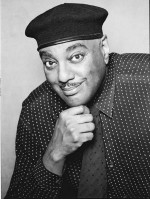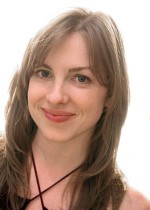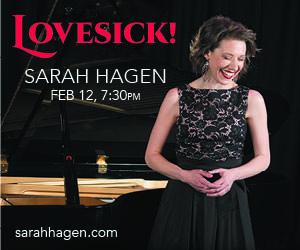Last month I wrote about the general decline in jazz clubs, and the concert hall or festival stage having become almost the only way of seeing and hearing “name” performers.
It got me thinking about the early days of jazz in Canada when, in fact, there were no jazz clubs as we have come to know them. For much of the following historical information I am greatly indebted to Mark Miller and his richly informative book about the early development of jazz in Canada: Such Melodious Racket, a must-have if you’re interested in the history of the music.
Toronto has a wealth of theatre history and plays a role in bringing ragtime, which was a precursor to jazz, to Canadian audiences. Shea’s Victoria was built in 1910 at the southeast corner of Victoria and Richmond, and with 1,140 seats was considerably larger than the original Shea’s Theatre on lower Yonge St. In 1911 a group called the Musical Spillers played a week there, sharing the bill with humourist Will Rogers. The Spillers had been touring the Pantages circuit, featuring “original ‘rag time’ music on six saxophones, three cornets, three trombones and six hundred dollars worth of xylophones.” In the same year, a saxophone ensemble called the Brown Brothers, sons of Canadian cornetist and bandmaster Allan W. Brown also played Shea’s with the Gertrude Hoffman Revue.
The next Shea’s Theatre stood from 1914-1956 on its new location, (a fire destroyed the previous theatre on Victoria Street), on Bay Street opposite old City Hall, until it was demolished in 1957 for new City Hall. Incidentally, the pipe organ was eventually relocated to Casa Loma. With 3,663 seats it was one of the largest vaudeville theatres in the world – one of the big four, including the Orpheum in Los Angeles, Loew’s State and the Palace in New York, and it attracted the best vaudeville acts. In late 1917 a group called the Verrnon Five, “expert exponents of the new music known as jazz,” appeared there, and the Toronto Globe reviewer wrote that they “succeeded at times in making a diabolical noise, thus justifying their claims to [being] a ‘Jazz’ company.”
It would be a major overstatement to call these events jazz concerts, but for thousands of people it was their first introduction to this new music. (The jazz concert as a formal occasion came to Toronto much later – at the Eaton Auditorium in October of 1945, a month before Charlie Parker’s first appearance at Massey Hall.) So, in a sense, we’ve gone full circle, from early “jazz” being presented in theatres to jazz being presented in concert halls. It has to be remembered, of course, that in those early days there were no jazz clubs in Toronto to go out of business!
Toronto the Good
When we talk about alcohol we think of prohibition and speakeasies in the U.S., but not everyone thinks of Canada – although Ontario, for example, introduced Prohibition measures from 1916 to 1927. There were exceptions however. Ontario’s wineries were exempted, and many breweries and distilleries remained open to serve the export market. It was also possible to ask your doctor for a prescription of rum or whisky – strictly for “medicinal” purposes, of course. This sort of legislation reminds me of the old joke: “Why did the Canadian cross the road?” “To get to the middle!”
Even when I arrived in Toronto in the mid-60s I can remember my amazement when I went to my first official liquor store (to this day a government monopoly) where there were no bottles on display. It was illegal to have even a glimpse of the liquid pleasures in store – and I had to fill in a form giving my name, address and what I wanted to purchase. It was a far cry from the Glasgow I had left; but that was then and thank goodness things have changed.
Footnote: In a conversation with Mark Miller before finishing this piece, he told me that he had unearthed some interesting information, after Such Melodious Racket had been published. At 14 King Street East, opposite the King Edward Hotel, in the years 1917-18 there was an establishment called the Cafe Royal that imported jazz bands from the United States!
The partnership between jazz and visual arts has been a sometime feature of programming at the McMichael Gallery. On October 18, 2009 at 1:30 you can enjoy an afternoon of jazz with Tara Davidson, and on November 1st the featured artist will be Alberta-born Colleen Allen. They’re both outstanding reed players representative of the younger generation of established and highly creative players on the local and international scene. The Gallery is at 10365 Islington Ave., Kleinburg. 905-893-1121.
 Meanwhile, the Jazz Vespers at Christ Church Deer Park, 1570 Yonge Street, continue and on Sunday, October 11, 2009, Joe Sealy (piano) and Paul Novotny (bass) will be featured, followed by the Dixie Demons on the 18th, and Tara Davidson and Mike Murley on the 25th.
Meanwhile, the Jazz Vespers at Christ Church Deer Park, 1570 Yonge Street, continue and on Sunday, October 11, 2009, Joe Sealy (piano) and Paul Novotny (bass) will be featured, followed by the Dixie Demons on the 18th, and Tara Davidson and Mike Murley on the 25th.
Degrees of jazz
The University of Toronto continues its presentation of Small Jazz Ensembles on Wednesday evenings, at 7:30pm in Walter Hall in the Edward Johnson Building.
There’s no admission fee and you have a chance to hear the work of the next generation of musicians. Also, one of the clubs where young players have a chance to get their feet wet in the school of hard knocks and mix with established players is The Rex on Queen Street West, which continues to programme 19 bands per week, including top student ensembles.
There is music out there, so get out and hear some of it live.
Jim Galloway is a saxophonist, band leader and Artistic Director of the Toronto Downtown Jazz Festival. He can be contacted at: jazznotes@thewholenote.com.




